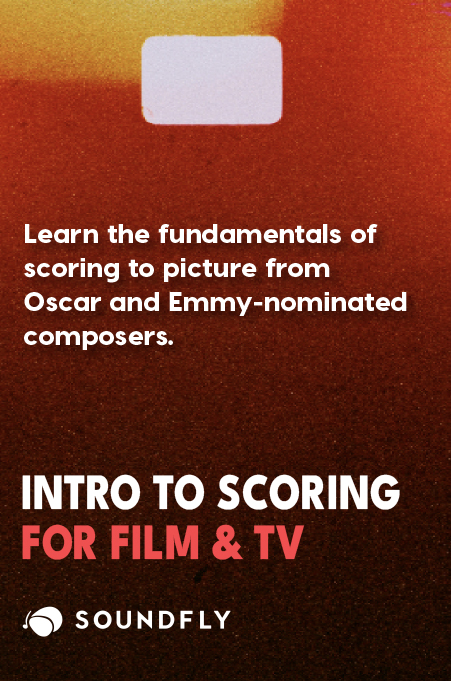+ This video lesson is presented courtesy of Kiefer’s course on Soundfly, Kiefer: Keys, Chords, & Beats. Sign up to explore theory, improvisation, and jazzy hip-hop, and improve your piano chops.
One of the best ways to get past writer’s block is to have multiple strategies you can use to come up with new and fresh ideas. Earlier in Kiefer’s course, we talk about analyzing other artists’ melodies and using that analysis to spark new melodic ideas.
Well, another strategy he’s come up with is to use speech to discover and play with melodies. Whether speaking in nonsensical syllables or actual words, there are natural rhythms and contours existing in our speech patterns — and for Kiefer specifically, rhythmic phrasing is one of the most important components of generating a new melody.
Let’s look at a quick example. If you’re not sure where to start with this, try your phone number. We’re going to use a fictitious one: 319-725-0108.
Here’s an audio file of one of our Soundfly team members saying the number and then playing the rhythm along to it on the keyboard. (*Hint: If you’re struggling to match the phrasing of the rhythm, feel free to record yourself, bring the recording into the DAW, and use the waveforms to line your playing up with it.)
Even something as simple as a phone number has a natural rhythm to it. There are also some accents that might suggest a bit of phrasing, on the “3” and “7” and then the “1” and “8.”
If we allow ourselves to try playing this phrase musically, we might be able to come up with something interesting.
Here’s the phone number as a rhythmic phrase, played one time through alone and then with some chords for fun. Notice that we’ve adjusted the rhythm of the last four numbers slightly to get a better phrase.
As Kiefer demonstrates in the video above, you can also often find melodic contour in speech. While it’s pretty tricky and maybe not even desirable to transcribe the exact pitch of each syllable, you can certainly use the overall direction of motion to guide you and start riffing on ideas.
If we tried to describe the melody of the phrase above, for example, the first three numbers in our phone number sound like they’re moving down. So do the second three numbers. Then the final four sound like two leaps upward.
Here’s another way our phone number phrase could sound like on the piano, using both the contour and rhythmic phrasing and taking a little creative license in the process:
Neither of our two phrases here are exact copies of the original sentence, but that’s fine. The point is simply to get ideas rather than creating a perfect replica.
Sometimes, Kiefer will use this method to come up with ideas for the main melody of a song. At others, he’ll use it to experiment with interesting bass lines.
This is not too dissimilar to an approach that the artist Kimbra uses where she starts by singing made up words, and uses the words to suggest a melody (you can learn more about that in her course, Kimbra: Vocal Creativity, Arranging, & Production, on Soundfly).

Speak a phrase and use it to create a melody.
Come up with a phrase or sentence. It could even be this exact sentence right here. Say it out loud to yourself. Use the natural rhythm and melodic movement in it to come up with a melody.
If you’re already a Soundfly subscriber, you can feel free to share what you come up with in either the #share-your-goals or #kiefer channels in Slack.
Don’t stop here!
Continue learning with hundreds of lessons on songwriting, mixing, recording and production, composing, beat making, and more on Soundfly, with artist-led courses by Kimbra, Com Truise, Jlin, Ryan Lott, and the acclaimed Kiefer: Keys, Chords, & Beats.



